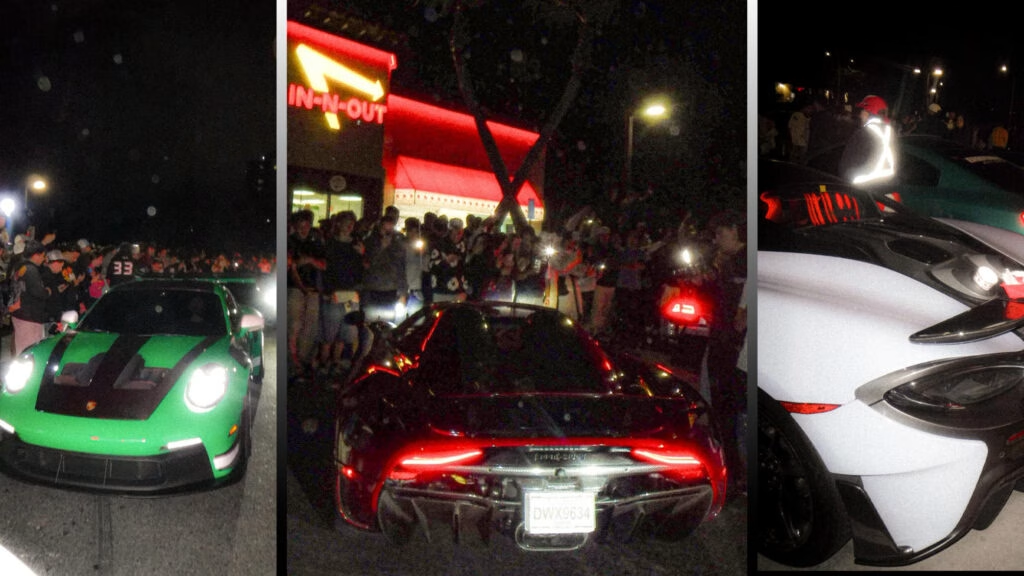What Really Happened During Monterey Car Week’s Wild Street Takeovers?
If you live anywhere near Monterey or Seaside, you know Car Week is a double-edged sword. On one hand, it’s a rolling parade of automotive art—Porsches, Bentleys, Lambos, the whole nine yards. On the other? Well, this year, things got a little out of hand. Let’s break down what went down, why it matters, and what’s likely to change next time.
Why Did Street Takeovers Erupt at In-N-Out and Home Depot?
It started innocently enough: car enthusiasts gathering at local hotspots to show off their rides. But as the sun dipped, the mood shifted. Hundreds of people swarmed parking lots at In-N-Out and Home Depot, turning what should’ve been a casual meet-up into a full-blown street takeover. Tire smoke, donuts, and revving engines quickly replaced friendly conversation.
Locals like Shyla Lucas described the scene as “crazy”—a word that doesn’t get tossed around lightly in these parts. By 11 p.m., police had barricaded roads, but the sheer size of the crowd was something the city hadn’t seen before. According to Seaside Police Chief Nick Borges, “This year was a first for us. You can see, just walking through here, the tire rubber that’s left behind. Just shows a lack of respect.”
How Did Police Respond—and Was It Enough?
The answer: not quite. Law enforcement scrambled, calling in mutual aid from neighboring departments. Officers managed to shut down hotspots, but not before the crowd moved from In-N-Out to Home Depot, keeping authorities on their toes. Video footage from the night shows a surreal mix of high-end supercars and hundreds of onlookers, with police nearby but seemingly outnumbered.
This isn’t just a local headache. According to the National Highway Traffic Safety Administration, illegal street takeovers have been on the rise across the U.S., with incidents up nearly 20% in major metro areas since 2022. The Monterey chaos fits right into that troubling trend.
What’s the Real Impact on Residents and Businesses?
For many locals, Car Week is a time to lay low. Beth Macdonald, a Marina resident, summed it up: “We try to avoid most of the peninsula during that week because it’s just too chaotic trying to get around.” Businesses like In-N-Out and Home Depot were left cleaning up rubber and debris, not to mention dealing with rattled employees and customers.
There’s a ripple effect here. Street takeovers can lead to property damage, injuries, and a strained relationship between car enthusiasts and the wider community. In some cities, insurance claims spike after these events. And let’s be real—nobody wants to explain to their boss why their parking lot looks like a drift track.
Are These Takeovers Just Harmless Fun or a Serious Problem?
It’s tempting to chalk it up as youthful exuberance, but the risks are real. The National Insurance Crime Bureau notes that incidents involving reckless driving and illegal gatherings can lead to increased premiums for everyone in the area. Plus, the presence of high-end vehicles doesn’t make things safer—if anything, it raises the stakes.
Still, not all gatherings turn chaotic. Many car meets are peaceful, well-organized, and even family-friendly. The difference? Respect—for the venue, the community, and the law. When that goes out the window, so does the goodwill.
What’s Next for Car Week and Local Enforcement?
Authorities aren’t taking this lightly. Seaside police have already promised stronger enforcement for next year, with plans to coordinate more closely with neighboring agencies and possibly introduce new technology like surveillance drones or automated license plate readers. Other cities have started using social media monitoring to anticipate and prevent illegal gatherings—a tactic that’s shown promise in Los Angeles and Houston.
But enforcement is only half the battle. Some experts, like Dr. David Strickland, former NHTSA administrator, argue that community engagement is just as important. “You need to work with car clubs and event organizers to set clear boundaries and expectations,” he says. “Otherwise, you’re just playing whack-a-mole.”
Can Car Culture and Community Coexist?
Absolutely, but it takes effort on both sides. Car Week is a huge economic driver for Monterey County, bringing in millions in tourism dollars each year. The challenge is channeling that energy into safe, sanctioned events while cracking down on the reckless few who spoil it for everyone else.
Some cities have started offering legal “drift nights” or closed-course events, giving enthusiasts a safe outlet for their passion. It’s not a silver bullet, but it’s a start. Open dialogue between organizers, law enforcement, and residents can go a long way toward keeping Car Week fun—and safe—for everyone.
The big takeaway? Managing Car Week’s wild side isn’t about perfection—it’s about smarter adjustments. Start with one change this week, and you’ll likely spot the difference by month’s end.

